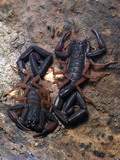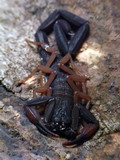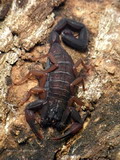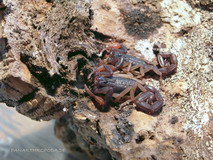- Akravidae
- Bothriuridae
- Buthidae
- Babycurus jacksoni
- Centruroides gracilis
- Centruroides meisei
- Centruroides nigrenscens
- Hottentotta hottentotta
- Lychas mucronatus
- Lychas scutilus
- Parabuthus pallidus
- Parabuthus raudus
- Parabuthus villosus "black"
- Caraboctonidae
- Chactidae
- Chaerilidae
- Euscorpiidae
- Hemiscorpiidae
- Iuridae
- Pseudochactidae
- Scorpionidae
- Superstitioniidae
- Troglotayosicidae
- Typhlochactidae
- Vaejovidae

Centruroides gracilis (Latreille, 1804)
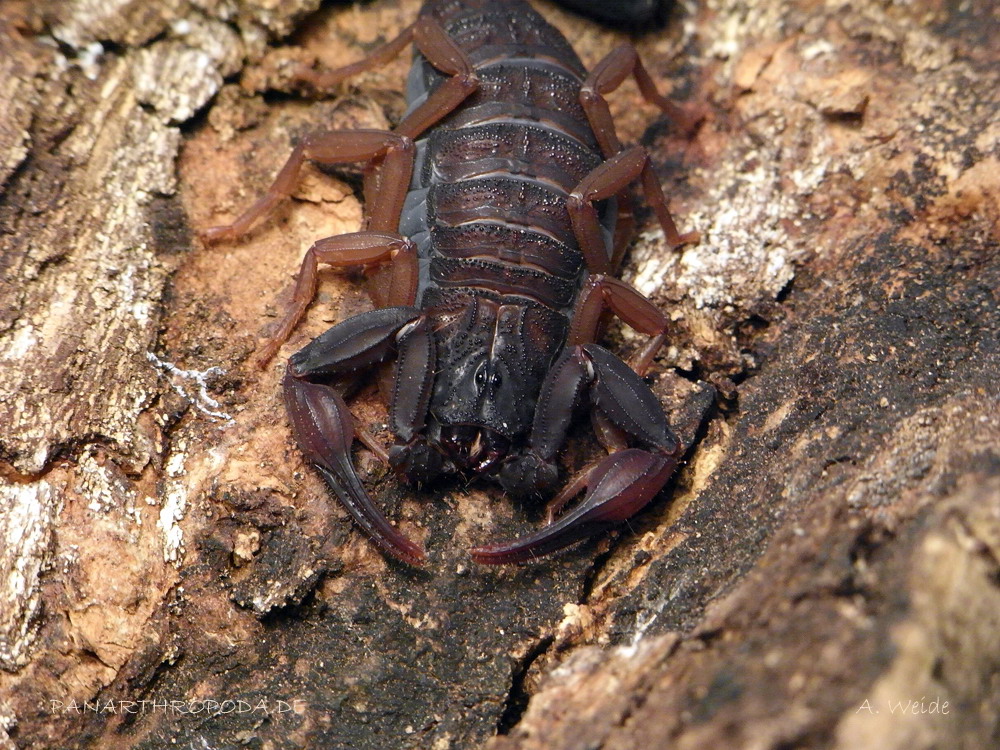
Adult female
Origin and occurrence
The here introduced Centruroides gracilis originated from Cuba.
This species occurs in a wide area which includes the south of the USA, Mexico, the middle american states and the north of South America with Venezuela, Colombia and Ecuador. In addition the species has been introduced into Cameroon, Gabon and the canary islands by man.
Appearance and sexual dimorphism
Centruroides gracilis is a species of scorpion with a relatively big bodysize. It will reach between 6 and 12 cm. The animals are of a black to reddisch brown color, the legs are brown-orange. The color can however vary since the species exhibits color morphes dependend on different populations.
The sexes of adults are easily distinguishable. Like in all Centruroides the males have significantly elongated metasoma segments, in addition the females are more bulky.
Behavior
Centruroides gracilis is a bark-living scorpion and therefore lives mostly on or under bark. The animals climb quite often and use niches between the bark as hideouts. Different specimen usually share one hideout, therefore this species is wellfit for keeping in groups. This goes for adults only, juvenile specimen exhibit cannibalistic behavior, especially during molts.
Centruroides gracilis is not especially aggressive. When disturbed they mostly flee and do not attack or even threaten. In this case they benefit from their speed, which one should keep in mind.
Keeping conditions
Centruroides gracilis is a species that lives in wet tropical zones and therefore a humid, moist climate is needed. I keep my specimen at temperatures of 28 °C during day and 20 °C during night. To achieve the constant high humidity the substrat should not dry out completely. Offering a shallow bowl for drinking makes sense in case of this species (but not too deep because of the risk of drowning).
Since this animals live on bark it is only logical to offer horizontal pieces of bark (cork). Dark niches are important for the animals to seek shelter during day. For this pieces of bark can just be stacked together.
The animals are very social and so rarely avoid each other, so the size of a container for a group does not need to be much bigger than a container for one single indiviual would. Measurements of about 20x20x20 cm are sufficient for a pair or three specimen - and bigger for bigger groups. The size of the running surfaces can be optimized using stacked bark.
Mating and raising the young
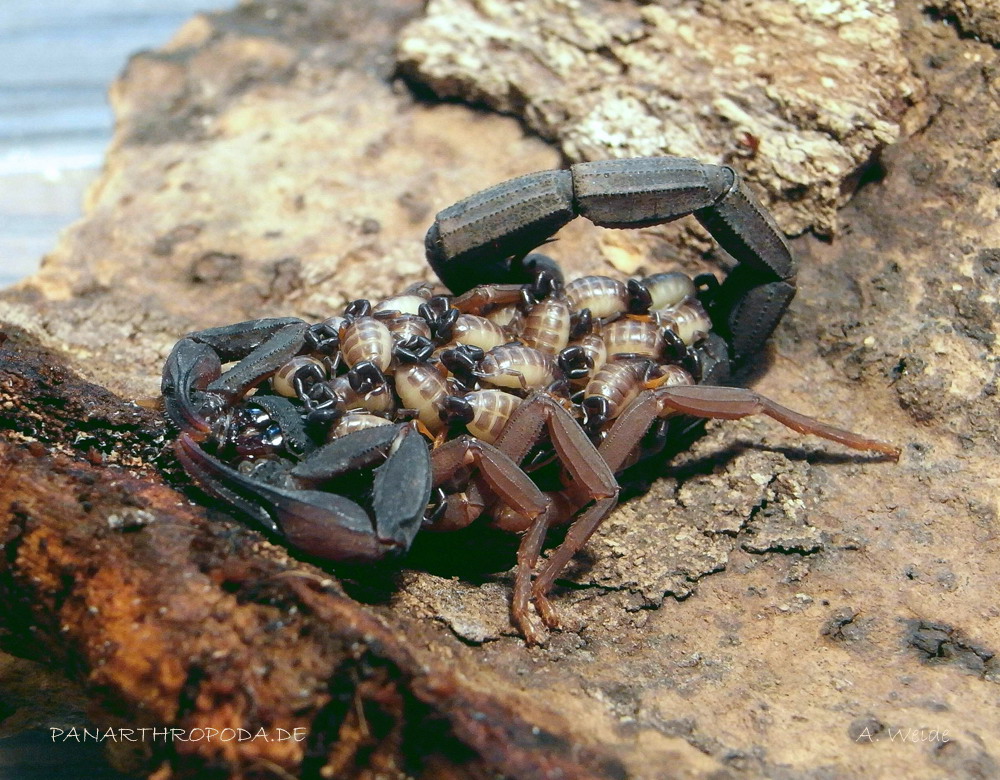
Mother with young in instar 1
The breeding of Centruroides gracilis is not particularely difficult. Under the conditions mentioned above the males will usually immidiately mate when put together with a female, which will litter about 5 to 6 months later. It is just important not to put them under stress. To be sure one could seperate the gravid females from the rest of the group (which is not necessary though).
The young will stay on the mother's back for one to one and a half weeks where they molt into second instar after a few days. At this state they are already quite big. After the young's descent from the mother's back they can be fed with small crickets.
At temperatures of about 30 °C the juveniles will grow quite quickly, one just has to look out for a constantly high humidity to prevent the young from drying out and helping with the molts. Due to the high humidity remains of the prey should be removed quickly to prevent mold and mites.
When fed well these animals can grow to adulthood within 7 to 8 months. The females reach adulthood in 7. instar, the males in 6. or 7.
When bringen the young up in groups one should always take account of deaths by cannibalism. Therefore keeping the young one by one is preferable.
A. Weide
